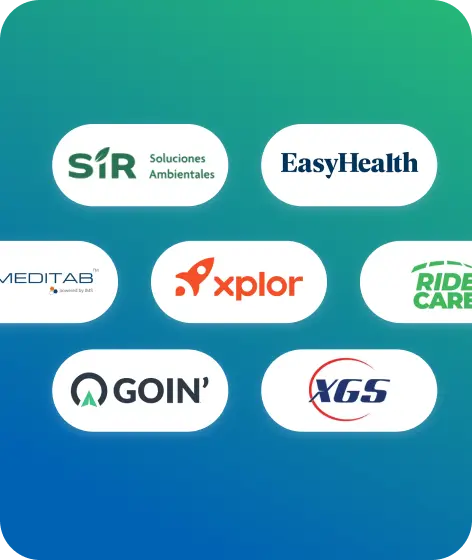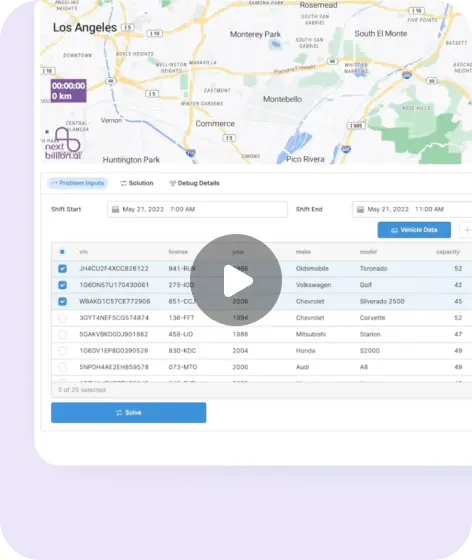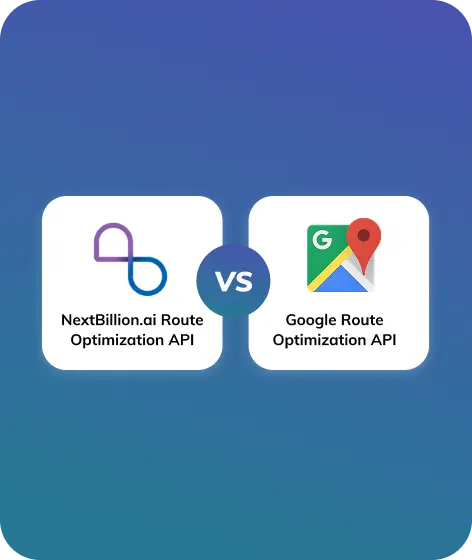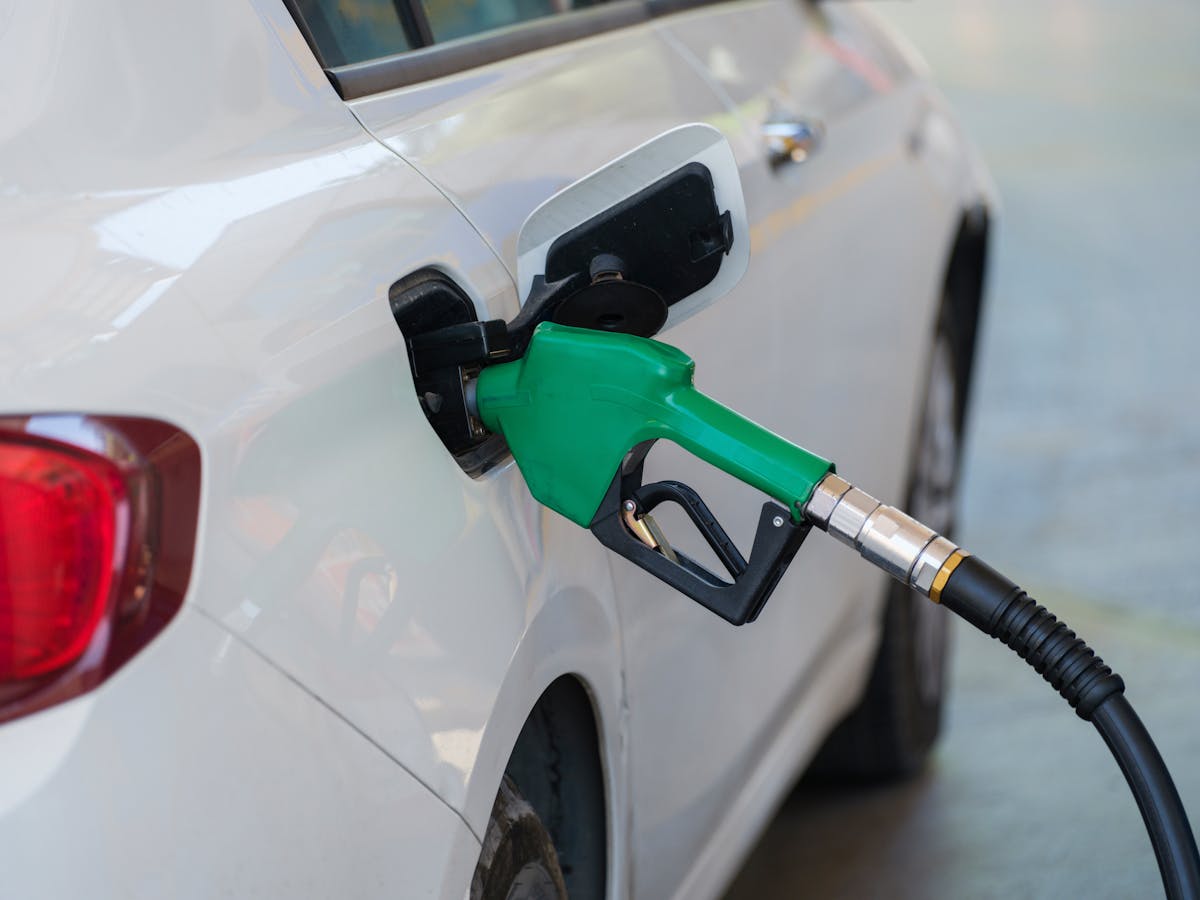
Table of Contents
Looking for the best delivery vehicles to boost your earnings in 2025? Demand for fast and reliable delivery has reached an all-time high due to eCommerce growing at a rapid pace. According to Statista, by the year 2027, global parcel volume will reach around 256 billion packages per year.
Be it groceries, packages, or restaurant orders, the right delivery vehicle would make or break your business. An efficient delivery vehicle will save fuel, improve delivery time, and satisfy its customers. However, with so many options available, how does one make that choice?
This guide will explain the most fuel-efficient delivery vehicles for long routes, urban traffic, and high fuel prices. Whether you are a single driver or run a fleet, it is necessary to know which vehicles offer the best value, reliability, and gas mileage. Read on to find your delivery vehicle for 2025.
Top 5 Benefits of Choosing the Right Delivery Vehicle

Choosing the right delivery vehicle will significantly influence the driver’s efficiency, costs, and even overall job satisfaction. Besides, long distances can be covered daily by a driver. So, the more effective and the best delivery vehicles, the more productive and profitable the drivers will be. The right type of vehicle saves on fuel, adds space for goods carried, as well as offers comfort when taking on the more demanding routes.
Here are some of the most promising benefits of choosing a delivery vehicle after considering your needs:
Fuel Efficiency and Operating Costs

Fuel prices fluctuate every time. Hence, cost features have become completely dependent on fuel economy. The most fuel-efficient delivery vehicles can provide relief in fuel consumption and eventually save thousands annually.
Electric and hybrid delivery vans now include regenerative braking systems and low-resistance tires, which enhance range and reduce energy loss.
Models equipped with automatic shut-off engines and aerodynamic body designs can stretch each unit of fuel or charge further and bring down operating costs without compromising reliability.
Cargo Space and Load Capacity
Different deliveries need various capacities, such as large vans for heavy load capacity and compact urban delivery vehicles for those tight city streets. Vehicles offering modular shelving with low step-in heights help reduce driver strain and improve cargo organization, which leads to faster delivery cycles. Payload management systems in newer vans also provide real-time weight distribution data, which supports better loading efficiency and road safety.
Driver Comfort and Technology
Another problem with the long-haul routes is driver fatigue. The introduction of such features as ergonomic seats, cruise control and smart GPS has increased the driver’s comfort and navigation. Many new models now include vibration-reducing steering wheels and cabin climate presets that automatically adjust based on time of day or weather. Built-in route analytics tools also assist in reducing unnecessary detours and support time-sensitive deliveries.
Cost and Affordability
Starting drivers want affordable delivery vehicles in a way that would be worthwhile, but still have a cost, durability and maintenance. Vehicles backed with longer warranty coverage and built-in diagnostic alerts reduce surprise repair expenses and downtime. Some budget-focused models also allow service access panels, which reduce labor charges during maintenance while keeping uptime consistent.
Versatility for Urban and Long-Distance Routes
Compact vans would perfectly suit urban routes, while larger vehicles would excel on long-distance deliveries requiring more room for cargo. Vehicles offering multiple wheelbase options and configurable cargo bays can serve dual functions without replacing the entire unit. Urban-compatible models with tight turning radii and high-visibility dashboards reduce errors in dense areas and improve safety.
Best Small Delivery Vehicles for Urban Areas
City deliveries can be complicated because of narrow streets, heavy traffic jams, and limited parking availability. Small appliances help drive around those problems with their compact designs, fuel-efficient engines, and flexible cargo space. Below are three top delivery vehicles 2025 that will meet the interest of a modern urban business and independent couriers.
1. Ford Transit Connect

The vehicle is compact and maneuverable with the ability to deliver stuff across the country. Its size makes it very much suited to narrow, crowded streets as well as very busy urban areas. This vehicle also offers small engine options that will allow a relatively high fuel economy, including a 2.0L inline-four engine with stop-start technology, which reduces fuel consumption and operational costs making it the best small delivery truck.
Transit Connect creates the perfect adaptable cargo formatting for small businesses. Inside the van, up to 106 cubic feet can be fitted with movable shelves and racks for holding customized loads like packages, groceries, or tools. It features among the best commercial delivery vehicles meant for practical use and cost-effectiveness for most businesses.
2. Nissan NV200
Easy and budget-friendly in today’s world, the Nissan NV200 delivers in a small busy street of merely 186 inches long. It can go past small downtown streets and into those parking spaces that are narrower than the average standard. Such situations are perfect for couriers hustling into and out of busy shops and entrepreneurs running small businesses.
It is small but is capable of carrying 122.7 cubic feet of cargo space. It is this effectiveness of compactness combined with capacity that makes the vehicle much sought-after by independent couriers and startups alike. With a potent blend fuel economy of 25 MPG combined, it partly qualifies as one of the most sustainable delivery vehicles with reduced carbon emissions and fuel costs.
3. Mercedes-Benz Metris
For anyone who desires durability and then top performance, Mercedes-Benz Metris is simply perfect. It has a strong body that is reliable for those businesses that need tough but long-lasting vehicles. This transport gives smooth handling and easy driving, making it quite superb for long-distance delivery within the city.
This vehicle also features very good advanced safety technology, such as blind-spot monitoring, crosswind stabilization, and active brake assist, which all help make the driver safe, especially in heavy traffic. Furthermore, flexibility in the cargo area has made it the best when considering hybrid delivery vehicles built for comfort and efficiency, seeing it has an impressive payload-carrying capability of about 2,425 pounds.
Best Large Delivery Vehicles for High-Volume Deliveries
Bulk deliveries require great work on the van’s storage unit, engine power, or durability. Vehicles tailor-made for high-volume operations should be equipped for carrying heavy loads without fail and at a manageable cost for maximum efficiency.
The following are among the best delivery vans 2025 for commercial purposes, which were chosen based on their reliability, performance, and flexibility:
1. Ford Transit Cargo Van
To moderate-sized businesses looking at the flexibility and strength aspects, the Ford Transit Cargo Van is one of the top preferred picks. It has several configurations that cater to different types of delivery, a choice of roof heights, several extended wheelbases, and also special cargo options. Not to mention, it can take up to 4,530 pounds of payload, easily hauling bulk deliveries.
The Ford Transit delivers excellent and reliable performance. It comes with a 3.5L V6 engine that offers a strong balance between power and fuel economy. Lane-keeping assist and adaptive cruise control are built into the system, making long trips more controlled and less demanding for drivers. The Transit also helps companies reduce maintenance costs over time. These savings continue throughout the vehicle’s lifespan and support long-term profitability.
2. Ram ProMaster
A completely front-wheel-drive delivery truck, the Ram ProMaster is the perfect combination for urban deliveries because it can maneuver through crowded and tight spaces. The perfect solution for high-volume deliveries is having as much as 463 cubic feet of space in its cargo area for easy loading and unloading.
This engine gives the van the power of a 3.6L V6 engine, considering it boasts heavy-duty capabilities in carrying tons of weight. Business owners can also expect high reliability from this delivery truck since its design greatly reduces maintenance costs associated with it. Business owners looking for hybrid delivery vehicles may also consider the electric and alternative fuel versions.
3. Chevrolet Express Cargo Van
The Chevrolet Express Cargo Van has been engineered and constructed for years of durability and heavy duty. With a maximum towing capacity of 10,000 pounds, the Chevrolet Express Cargo Van is regarded as one of the best delivery vans 2025 for long-haul operations with a high weight of transport.
The innards of this van are designed simply to repair and maintain without a lot of cost. The Express also presents an option for those businesses interested in reducing hybrid delivery but still insisting on rugged vans that can take long hauls while still not being let down in reliability.
Best Electric Delivery Vehicles for 2025
In recent years, electric vehicles have taken the delivery sector by storm with their environment-friendly and cost-effective solutions for businesses.
Electric vans are fast becoming some of the top delivery vehicles for end-users due to enhanced battery technology and smart features. Presented here are the best electric delivery vehicles 2025 based on their efficiency, range, and sheer advanced functionality:
1. Rivian EDV 700
Made for Amazon’s fleet, the Rivian EDV 700 has been well-designed for delivery applications beyond Amazon. With high-mileage battery capability, up to 150 miles per charge, this van is efficient for long delivery routes. The EDV has the largest cargo storage availability which places it among the best cargo vans 2025 for high-volume delivery.
With smart technologies with advanced telematics, the Rivian EDV 700 helps optimize route planning, cutting down on fuel usage. Due to its environmentally friendly electric drivetrain, the operational cost of the vehicle is further lowered, making it a viable option for sustainability-focused businesses.
2. Ford E-Transit
According to reports, the Ford E-Transit is a fully electric van that is connected to a top-notch charging network. Configuration parameters can be changed to accommodate various delivery situations. This van is the most versatile option for delivery vans due to its adjustable wheelbase and roof height.
Another benefit is lower maintenance expenses. Compared to gasoline-powered vehicles, the electric van has a lot fewer moving parts, which reduces the amount of time merchandisers must spend on maintenance and repairs. For every business with a growing fleet, the E-Transit is a practical and even financially reasonable choice.
3. Mercedes-Benz eSprinter
The Mercedes-Benz eSprinter is primarily an urban/regional delivery vehicle since it is smooth and quiet. It is carbon neutral and a green alternative to various parties looking to mitigate their carbon footprint.
The eSprinter electric drivetrain is optimized for efficiency, providing better fuel economy and lower running costs. It features one of the most spacious cargo areas, thereby certifying its spot as one of the most excellent electric delivery vehicles 2025 for carrying goods in urban settings. Well-equipped with intelligent safety features such as lane-keeping assistance, it provides an enhancement in driver comfort while reducing delivery risks.
Comparing Gasoline, Hybrid, and Electric Delivery Vehicles
Choosing the right kind of vehicle is of utmost importance for the delivery businesses. Gasoline, hybrid, and electric delivery vehicles have their own uniqueness. While the gasoline ones are conventional, hybrids have fuel efficiency, and electric ones provide long-term savings and environmentally friendly advantages.
Awareness of such differences helps businesses in ensuring cost optimization through sustainability and performance considerations.
Criteria | Gasoline Vehicles | Hybrid Delivery Vehicles | Electric Delivery Vehicles |
Fuel Efficiency and Costs | Lower upfront cost but higher fuel expenses. | Moderate fuel efficiency; savings in stop-and-go traffic. | High initial cost; saves fuel over time with electricity. |
Maintenance and Reliability | Frequent oil changes and engine repairs are needed. | Lower maintenance than gasoline but still requires fuel servicing. | Fewer parts, low maintenance, and longer lifespan for key components. |
Sustainability and Incentives | High emissions and minimal eco-benefits. | Reduced emissions compared to gasoline vehicles. | Zero emissions; qualifies for government tax credits and rebates. |
While hybrids provide a medium ground for fuel efficiency, switching to electric delivery vehicles lowers fuel expenditures and carbon footprints. Short-term, low-cost needs may still be met by gasoline-powered cars.
When to Choose a Gasoline or Diesel Vehicle?
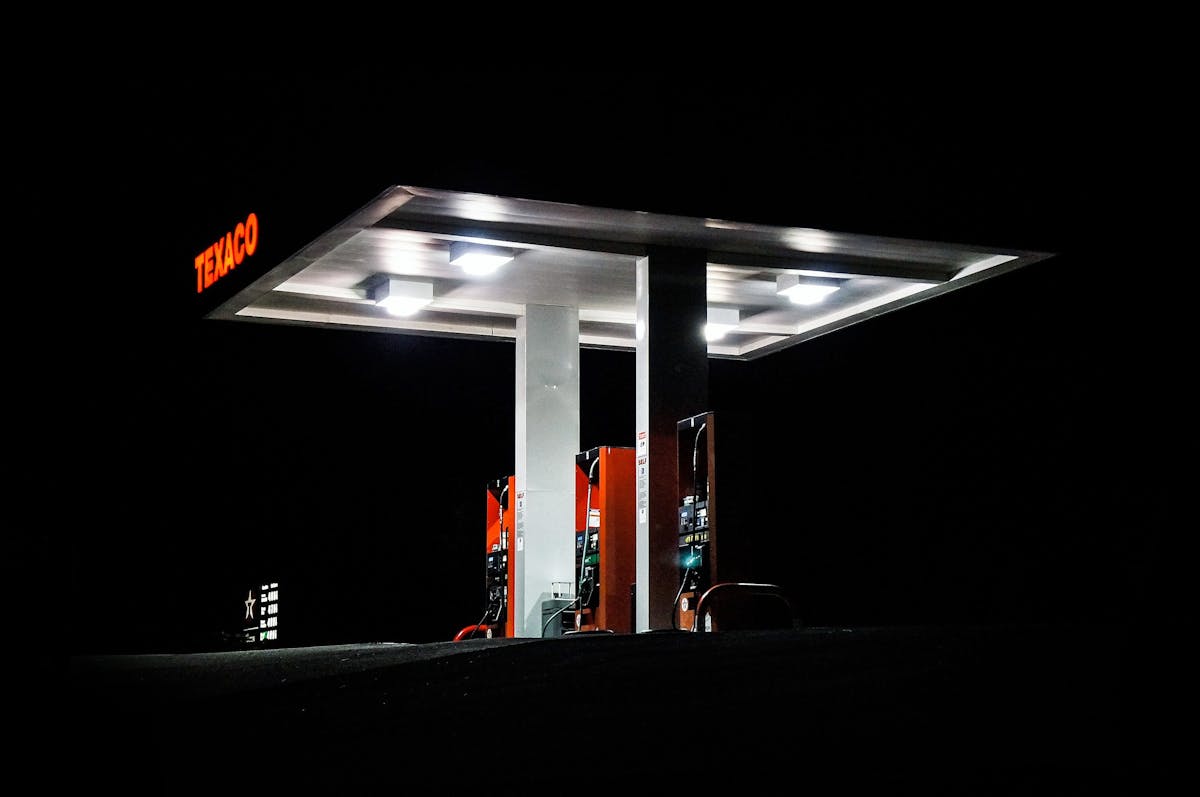
Choosing between gasoline or diesel for delivery vehicles would depend on the routes and types of goods you carry. Delivery vehicles can be used for distance, rural-area, and heavy-duty deliveries. They also provide more widespread availability of fuel and established track records as trustworthy partners for businesses with any heavy or long-distance requirement.
Long-Distance and Rural Deliveries
Gasoline or diesel vehicles are needed for delivery to remote parts because you can always find a fuel station there. A diesel engine is a highly fuel-efficient highway vehicle, making a long route less taxing than one with gasoline engines. When it comes to handling those rugged conditions and long hauls, torque and endurance characterize these vehicles.
Heavy-Duty Deliveries
As for heavy-haulage work, diesel vehicles can give an improved carrying capacity and increased ability to tow bulk cargo. They are rugged workhorses that can work all day under demanding conditions and are built for durability. These vehicles are perfect for companies engaged in freight, construction supplies, or high-volume goods. Gasoline engines run well for mid-tier heavy-duty applications and can be quite flexible regarding cost efficiency.
When to Choose an Electric or Hybrid Vehicle?

Urban companies or those with sustainability in their minds can choose electric or hybrid delivery vehicles in an ideal world. Lower operational costs, fewer emissions, and savings in the long run are the highlights. Nevertheless, they are best suited for short-distance routes, eco-friendly companies, and those chasing green initiatives.
Urban and Short-Distance Deliveries
Electric and hybrid vehicles perform well in cities due to the wider availability of charging stations. Their low emissions and silent operations make them ideally suitable for urban fleets. The operational costs are also much reduced due to little fuel consumption and maintenance, rendering them even more viable for short-distance deliveries.
Businesses Focused on Sustainability
For companies trying to institutionalize corporate sustainability, electric or hybrid delivery vehicles are very great options. They facilitate the reduction of carbon emissions, enhance air quality, and comply with environmental regulations. Moreover, the transition improves corporate image by demonstrating responsibility toward eco-friendliness and thereby, reduction in overall fleet emissions.
How Nextbillion.ai Helps Delivery Businesses in 2025?
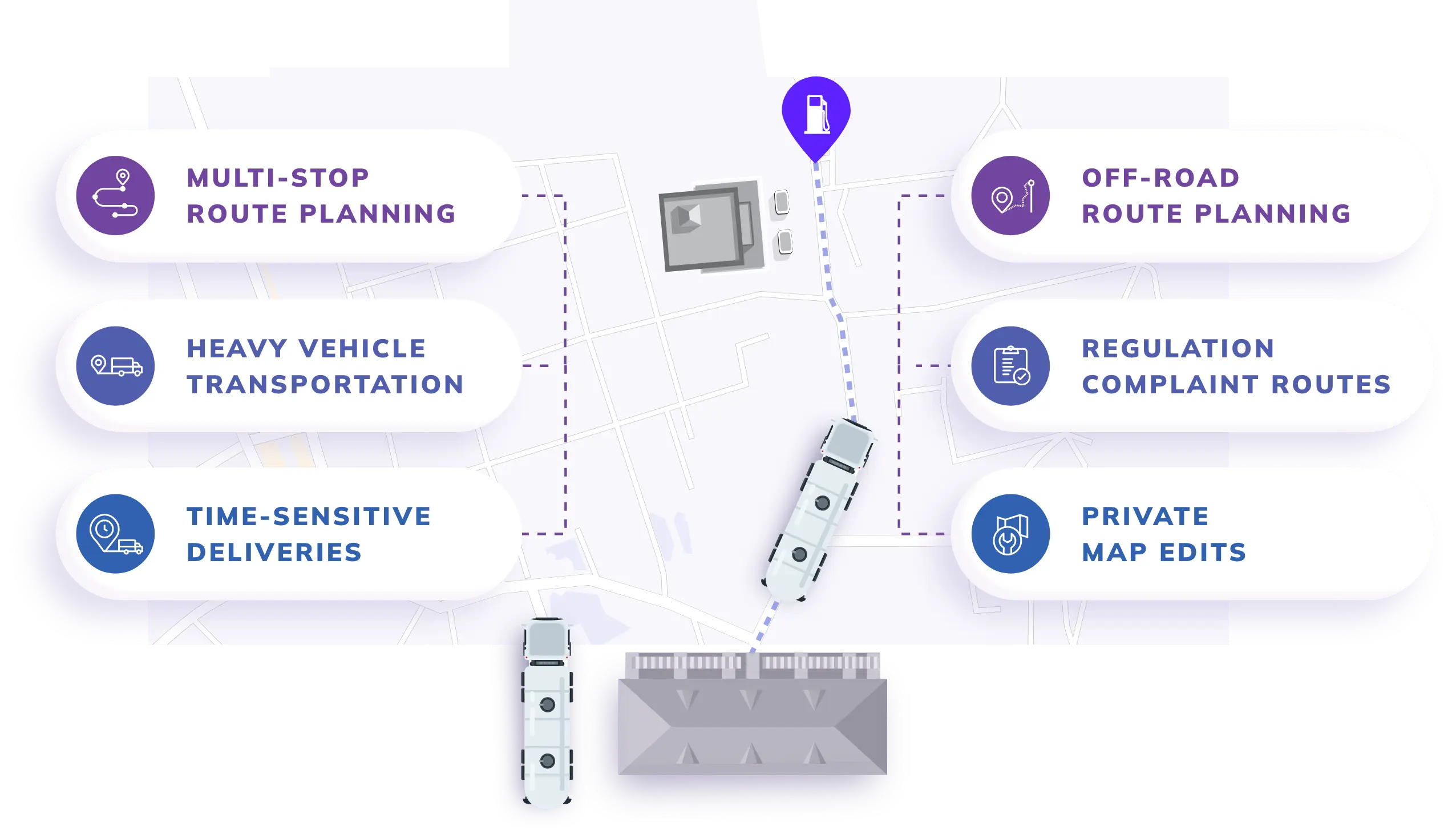
Choosing the right delivery vehicle is only part of building an efficient logistics operation. Businesses also need mapping systems that adapt to real-world delivery conditions and support vehicle performance without adding layers of confusion. This is where Nextbillion.ai plays a critical role by offering AI-powered mapping solutions designed for enterprise-scale logistics.
Nextbillion.ai equips businesses with APIs and SDKs that power accurate route planning and traffic-aware dispatching. The Distance Matrix API helps calculate travel time and distance with precision while considering delays and delivery time windows. This is useful for businesses with limited driver availability or tight customer schedules.
The Directions API calculates the fastest route for each vehicle based on vehicle type and local restrictions. It allows businesses to send the right vehicle to the right location without guesswork. This helps improve efficiency and reduce fuel costs for companies that operate electric or hybrid fleets alongside traditional vehicles.
For teams that need greater visibility, the Live Tracking API and SDKs offer real-time updates that reflect the vehicle’s actual position and movement. Fleet managers use this data to respond faster and assign tasks based on availability and proximity. The platform also supports geofencing and clustering tools, which make it easier to manage zones, avoid restricted areas, and group deliveries more effectively.
Nextbillion.ai also helps improve long-term route performance through route optimization models that account for delivery stops, constraints, and preferences. These models help businesses reduce missed deliveries and lower mileage without disrupting drivers. The platform adjusts to businesses of all sizes and supports custom rules across cities, countries, and delivery networks.
With Nextbillion.ai, logistics teams gain better control over travel time and fuel output without being forced to scale up manpower. This is how delivery businesses in 2025 can improve reliability and reduce operational waste using one platform built specifically for large-scale mobility operations.
Conclusion
The delivery vehicle you will choose in 2025 will differ according to the business requirements truly at stake: its fuel efficiency, cargo space, low maintenance, and environmental impact. For example, urban couriers may favor small electric vans that maneuver lightly for sustainable purposes, whereas rural or heavy-duty workloads would prefer the high-torque long-distance capability of diesel engines.
With enormous pressure for delivery services plus a little extra incentive for sustainability, taking the lead is now by investing in robust, economical, and future-ready vehicles. Whether it is the robust Ford Transit, the versatile Mercedes-Benz Metris, or the environmentally responsible Ford E-Transit, the best delivery vehicles will vastly improve your profits as well as your operational efficiency.
About Author
Bhavisha Bhatia
Bhavisha Bhatia is a Computer Science graduate with a passion for writing technical blogs that make complex technical concepts engaging and easy to understand. She is intrigued by the technological developments shaping the course of the world and the beautiful nature around us.

